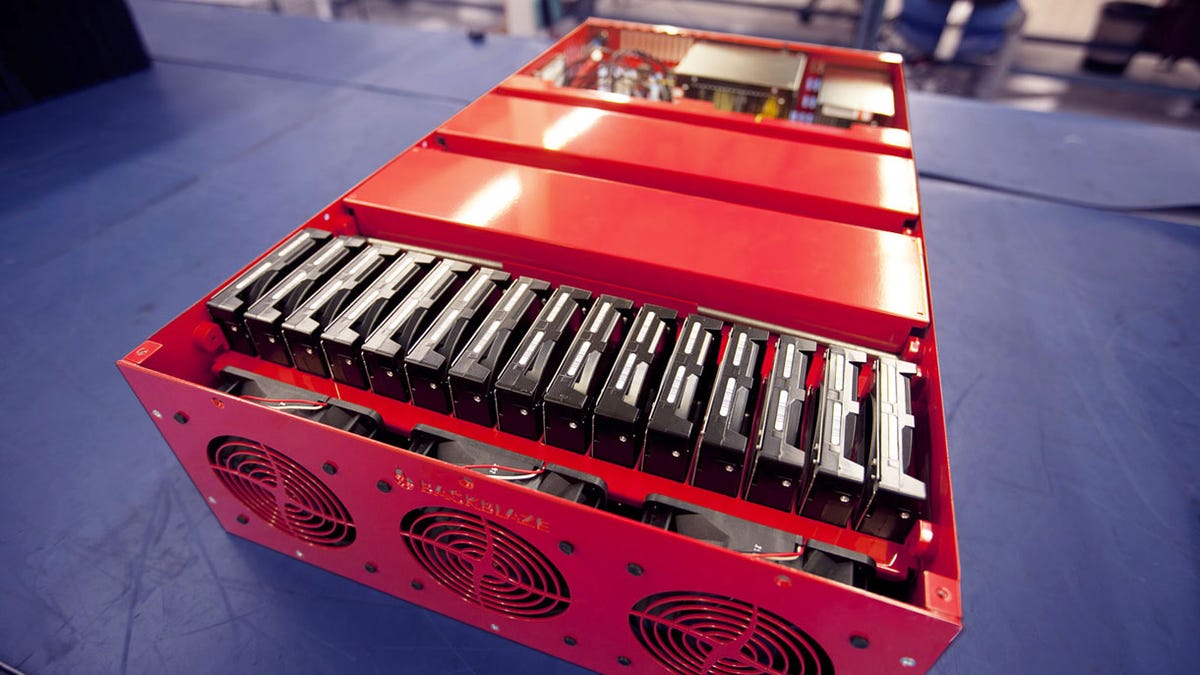Backblaze shares third-gen storage server design
Want to launch your own high-capacity networked storage infrastructure? Backblaze just shared its new 180-terabyte Storage Pod design.
Backblaze, a startup offering online backup service, has released the designs for its newest Storage Pod, a low-budget storage server with 180TB of capacity.
It was something of a PR stunt when the company shared its first-gen Storage Pod design back in 2009, but the 67-terabyte system proved useful to organizations including the Vanderbilt University Institute of Image Science, which stores medical imaging data, ad agency Crispin Porter + Bogusky, and and the Geographic Information Network of Alaska. Netflix was inspired to share its Open Connect Appliance Hardware design, and Backblaze also showed its Storage Pod 2.0 design, which could accommodate 135TB of data.
Now the Storage Pod 3.0 design is out, too. Backblaze uses 450 pods to hold more than 50 petabytes of customer data, it said.
The third-generation pods use 4TB drives -- up to 45 of them -- which increases the total capacity. Instead of being held in place by a band, they're now squeezed by an anti-vibration panel that also shaves an hour off storage pod assembly time and makes it easier to replace failed drives.
The new design also switched to a Supermicro MBD-X9SCL-F motherboard, upgraded to a second-generation, lower-power Intel Core i3-2100 processor, improved airflow to keep components cool. The total cost for the pod -- without drives -- dropped to $1,942.59, $37.41 less than the second-gen Storage Pod.
"The real influencer in the total cost will be the hard drives. The lingering effects from the Thailand drive crisis and consolidation in the drive industry have meant that even today hard drive prices are higher than they were when Pod 2.0 was introduced back in July of 2011," Backblaze said.
The company has been hurt by the hard drive shortages in Thailand and, perhaps, by consolidation in the industry that's slowing the ordinary pace of price cuts. Indeed, the cost per gigabyte is somewhat higher for new 4TB drives than for the earlier 3TB models it's been using. But lower costs for power consumption, rack space, and installation mean the 4TB drives work out to be the same cost.
Anyone interested in actually building the Storage Pod 3.0 can check Backblaze's description for parts listings, assembly instructions, and other details.


